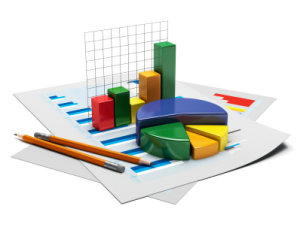 Since businesses in today’s competitive market are falling over themselves to hire data scientists, many individuals considering this thriving career path are interested in learning the specifics behind how is data mining used to gain an edge in the business world. As a powerful new tool for knowledge discovery, data mining is a computer-assisted process of digging through immense data sets and extracting meaningful analysis of the data to find trends that would otherwise go unnoticed. According to Microsoft, in an effort to answer business questions that were once too complex to solve, data scientists utilize data mining to scour databases in search of hidden patterns and predictive information. Read on to learn more about the ways data mining is being used to help businesses make better decisions with every transaction.
Since businesses in today’s competitive market are falling over themselves to hire data scientists, many individuals considering this thriving career path are interested in learning the specifics behind how is data mining used to gain an edge in the business world. As a powerful new tool for knowledge discovery, data mining is a computer-assisted process of digging through immense data sets and extracting meaningful analysis of the data to find trends that would otherwise go unnoticed. According to Microsoft, in an effort to answer business questions that were once too complex to solve, data scientists utilize data mining to scour databases in search of hidden patterns and predictive information. Read on to learn more about the ways data mining is being used to help businesses make better decisions with every transaction.
Affinity Analysis
Also referred to as basket analysis, affinity analysis is important for helping businesses look specifically at the items that customers have bought to improve their store layouts or recommend related products for driving profitability. Using data mining tools, businesses can form predictions on future customer behaviors based on their past purchasing habits and preferences. Since data mining allows analysts to search through purchasing observations over a long period of time, there can be useful information spotted in trends between customers who bought one item also purchased another. As a result, businesses can receive valuable opportunities for gathering ideas for future promotional sales.
Database Marketing
When examining customer purchasing trends through data mining tools, analysts can also look for certain demographics or psychographics to build complete customer profiles. Once businesses are able to target specific customers based upon this hidden intelligence, they can create products and promotions that will virtually sell themselves for a large profit. As the analysts feed in comprehensive database information on sales, surveys, and subscriptions, business leaders can gain an edge by better understanding their customer base. For instance, a regular CRM report may indicate that the majority of a customer base resides in Florida, but data mining may help uncover the hidden similarities that most are over the age of 65, shop mostly on weekends, and even prefer the color blue.
Merchandise Planning
Whether the company is based in a brick-and-mortar location or online in cyber space, data mining is very helpful for making merchandise planning decisions. Data mining can be used to evaluate the amount of merchandise that will be needed to fulfill demand, determine stocking options, assess inventory warehousing layouts, and revitalize old inventory to show the latest up-to-date trends for products. Since a business needs to select the right amount of stock throughout the year to maximize profit, data mining provides intelligence that can help stock inventories with the products that customers want most. When businesses can handle typical runs on certain merchandise, there is a less likelihood that customers will become dissatisfied, jump ship, and make a trip to competitors for their needs.
Related Resource: Health Informatics
Overall, through the complex algorithms, data mining is extremely useful for helping companies reveal valuable information on their customers. When businesses collect more data on customers, they are able to deliver more complimentary products with an enhanced value, according to the The Atlantic. Now that you know everything you wanted to know about how is data mining used, you can truly understand the immense inferential power behind this practice in generating more revenue in the competitive business climate.
